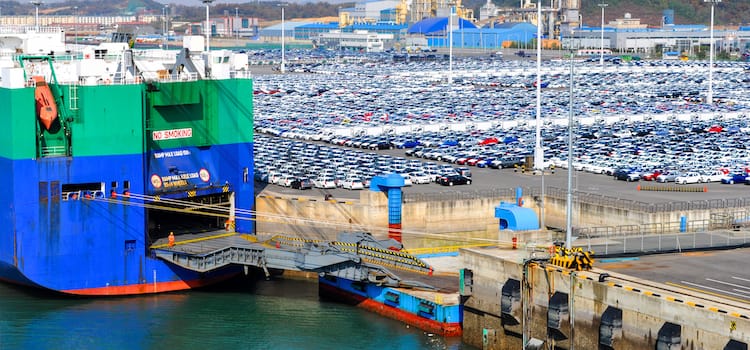
The COVID-19 pandemic has had a significant impact on vehicle shipping. And while the impact has varied depending on the region and the specific industry, the pandemic has caused disruptions and challenges for shipping companies and their customers alike.
Reduction in Capacity
One of the main impacts of COVID-19 on shipping a vehicle by sea has been a reduction in capacity and availability of vessels. Many shipping companies began to reduce the number of voyages or routes due to a decline in demand and the need to implement COVID-19 safety measures on board.
This resulted in a shortage of available space on vessels and longer waiting times for shipping.
The reduction in capacity has been particularly pronounced in the container shipping industry, where there has been a surplus of containers and a decline in demand for shipping services. This has led to a surplus of vessels and a reduction in the number of voyages and routes that shipping companies operate.
Another way that COVID-19 has reduced capacity is by disrupting the supply chain and causing delays and bottlenecks in the loading and unloading of vessels.
Many ports implemented measures to reduce the risk of COVID-19 transmission, such as reducing the number of workers on site, implementing social distancing measures, and requiring additional health screenings. These measures resulted in slower turnaround times for vessels and a reduction in the overall capacity of the shipping industry.
Overall, the COVID-19 pandemic has had a significant impact on vehicle shipping, including a reduction in capacity and availability of vessels, as well as disruptions and delays in the shipping process.
Disruptions in Supply Chain
The slowdown in the shipping process was also the result of general disruptions in the supply chain.
The COVID-19 pandemic has caused disruptions in the supply chain in a number of ways.
COVID-19 disrupted the supply chain because of delays in the production and transportation of goods. Many factories and warehouses had to reduce their operations or close temporarily due to COVID-19 outbreaks or government restrictions. This disrupted the flow of goods and caused delays in the supply chain.
In addition to these operational disruptions, the COVID-19 pandemic has also caused economic disruptions in the supply chain, with reduced demand and lower prices for many goods. This has led to financial challenges for businesses and may result in further disruptions in the supply chain as companies adjust their operations.
Disruptions to Port Operations
One of the main ways COVID-19 had disrupted port operations was by causing delays and bottlenecks in the loading and unloading of vessels.
Many ports have implemented measures to reduce the risk of COVID-19 transmission, such as reducing the number of workers on site, implementing social distancing measures, and requiring additional health screenings. These measures have resulted in slower turnaround times for vessels and a reduction in the overall capacity of the shipping industry.
Additionally, many factories and warehouses reduced their operations or closed temporarily due to COVID-19 outbreaks or government restrictions. This, in turn, had disrupted the flow of goods and caused delays in the delivery of cargo to ports.
Disruptions across the board cause economic disruptions in the shipping industry, with reduced demand and lower rates for shipping services. This led to significant disruptions in port operations, resulting in delays and bottlenecks in the transportation of goods and challenges for the shipping industry.

Financial Impact from Reduced Demand
The COVID-19 pandemic has created financial challenges for the shipping industry in several ways by causing a decline in demand for shipping services.
Many businesses reduced their operations or closed temporarily due to COVID-19 outbreaks or government restrictions, which generally led to a decline in the demand for shipping services.
And so, this decline in demand resulted in lower rates for shipping services, which has had a negative impact on the financial performance of shipping companies. Many shipping companies had to reduce their operations or lay off workers in order to cut costs and mitigate the financial impact of the pandemic.
In addition to the decline in demand, the COVID-19 pandemic has also caused disruptions in the supply chain and the transportation of goods, which has led to delays and bottlenecks in the shipping process. This has resulted in additional costs and financial challenges for shipping companies, as they have had to deal with the impacts of the pandemic on their operations.
Overall, the COVID-19 pandemic has created significant financial challenges for the shipping industry, with a decline in demand and disruptions in the supply chain and the shipping process.
These challenges had a significant, negative impact on the financial performance of shipping companies and may continue to affect the industry in the future.
The good news is we are seeing signs of recovery with an increased number of vessels servicing coastal regions. Significantly, this is resulting in increased volumes and capacity for shipping vehicles by sea again.





